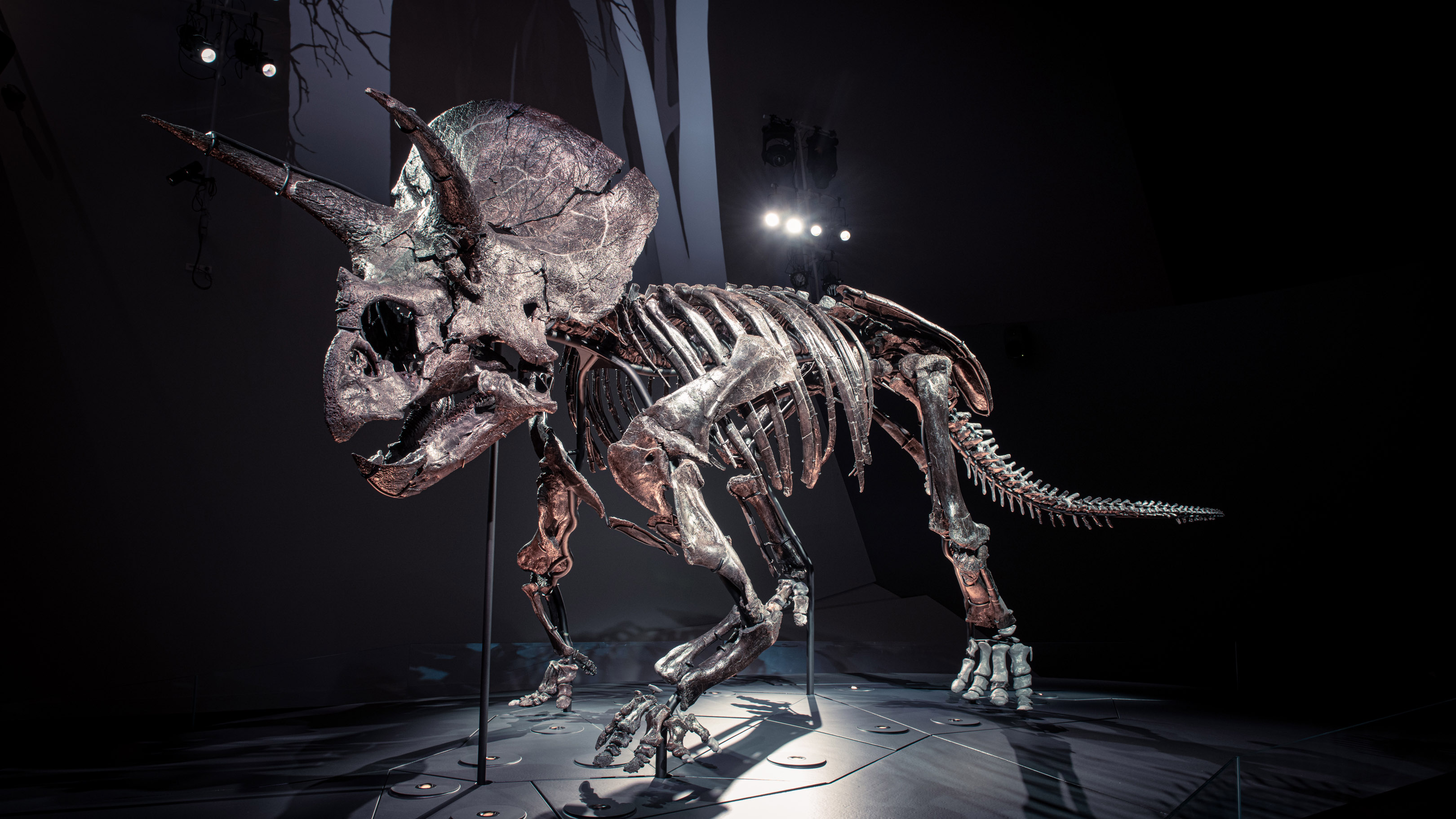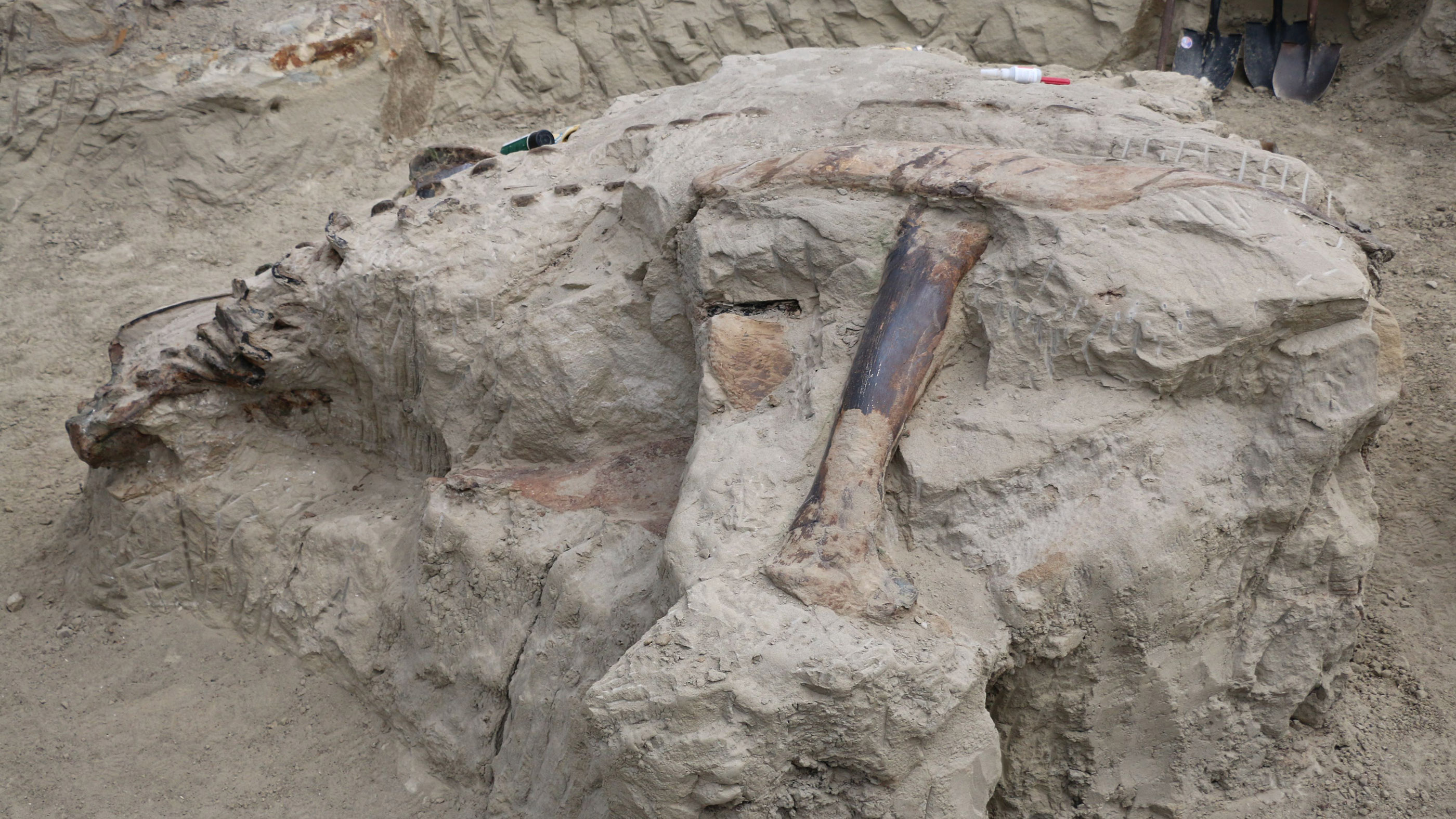Meet 'Horridus,' one of the most complete Triceratops fossils ever found
The skeleton is over 85% intact and includes a near-complete skull and spine.
A massive Triceratops that died 67 million years ago left behind a near-complete skeleton that is among the most intact ever found. Nicknamed "Horridus" after the species name (Triceratops horridus), the fossil, which is about 85% complete, made its public debut on March 12 at Melbourne Museum in Australia in the new exhibit "Triceratops: Fate of the Dinosaurs," representatives said in a statement.
Horridus was an herbivore, or plant-eating dinosaur, that lived during the Cretaceous period (about 145 million to 66 million years ago), and it grew to an impressive size. The fossil contains more than 260 bones and weighs more than 2,200 pounds (1,000 kilograms). It measures nearly 23 feet (7 m) long and stands over 6.6 feet (2 m) tall.
The skull, which is 98% complete, is tipped with two slender horns at the brow and a stubby horn atop the nose. The neck frill spans 4.9 feet (1.5 m), and the skull weighs about 575 pounds (261 kg). The fossil was discovered on private land in Montana in 2014, and Museums Victoria — the Australian organization that operates three state-owned museums in Melbourne — acquired the specimen in 2020, the museum announced in December that year.
Related: Tiny & old: Images of 'Triceratops' ancestors
When Horridus arrived in Melbourne, it was in pieces in eight crates — some of which were car-size, museum representatives said. Fossil preparers measured, labeled and 3D-scanned each bone before the skeleton was assembled for display. While many articulated Triceratops skeletons are exhibited around the world, only Horridus and a handful of others are made of bones that came from one individual animal, said Erich Fitzgerald, a senior curator of vertebrate paleontology at Museums Victoria in Australia.
"This is the Rosetta Stone for understanding Triceratops," Fitzgerald said in the 2020 statement. "This fossil comprises hundreds of bones including a complete skull and the entire vertebral column, which will help us unlock mysteries about how this species lived 67 million years ago," he said.
In the exhibit, Horridus stands in a chamber with projections illuminating its bones. Scientists can't say for sure if Horridus was male or female, but there is much that researchers can learn from its near-complete skeleton about Triceratops evolution, biology and behavior, Fitzgerald said in the statement.
Get the world’s most fascinating discoveries delivered straight to your inbox.
"Being permanently housed at Melbourne Museum means this remarkable fossil will be accessible to science for generations to come," he said.
You can see Horridus in person at Melbourne Museum, but if that's too far away you can still examine the massive dinosaur's bones using an interactive 3D digital model on the museum's website.
Originally published on Live Science.

Mindy Weisberger is a science journalist and author of "Rise of the Zombie Bugs: The Surprising Science of Parasitic Mind-Control" (Hopkins Press). She formerly edited for Scholastic and was a channel editor and senior writer for Live Science. She has reported on general science, covering climate change, paleontology, biology and space. Mindy studied film at Columbia University; prior to LS, she produced, wrote and directed media for the American Museum of Natural History in NYC. Her videos about dinosaurs, astrophysics, biodiversity and evolution appear in museums and science centers worldwide, earning awards such as the CINE Golden Eagle and the Communicator Award of Excellence. Her writing has also appeared in Scientific American, The Washington Post, How It Works Magazine and CNN.
 Live Science Plus
Live Science Plus







